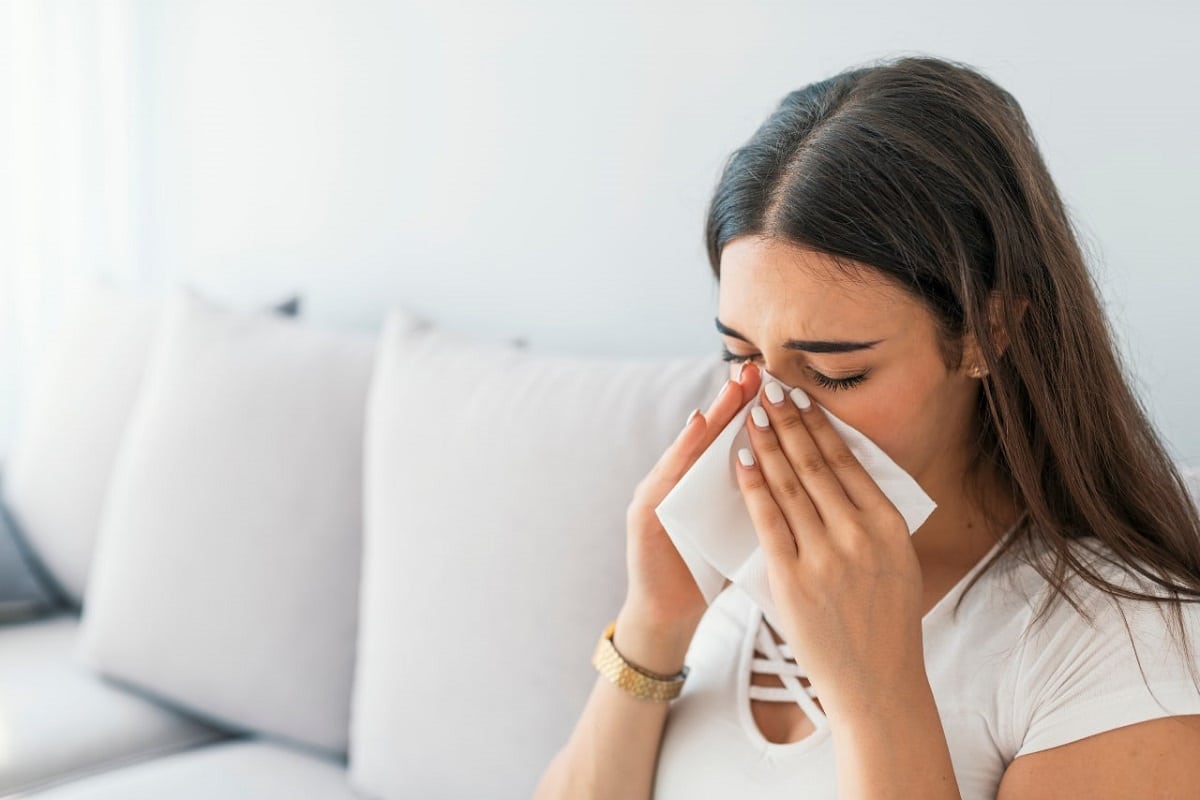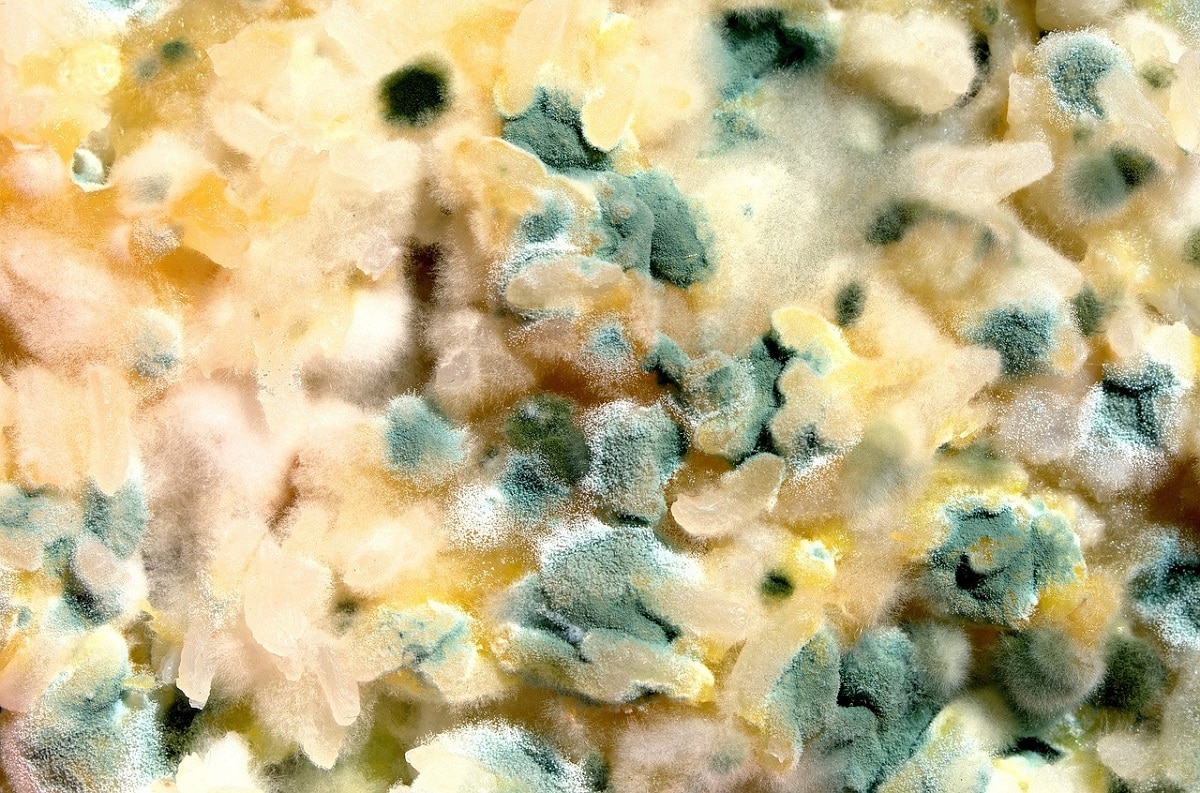
Moisture allergy is a subtype of upper and lower respiratory tract allergy caused by inhalation of airborne fungal spores and requires high humidity to survive and reproduce. All people are exposed to mold, but some people have a disproportionate response from their immune system, which manifests as respiratory symptoms. The moisture allergy It is the cause of many respiratory problems, which mainly affect children and the elderly. They are the third most common cause of allergic respiratory disease and most people are allergic throughout the year.
For this reason, we are going to dedicate this article to telling you what the main symptoms of allergy to humidity are, how to prevent it and what aspects to take into account.
What are mushrooms?

In general terms, we speak interchangeably of fungi and mushrooms, and we believe that there are two categories: edible and poisonous. However, fungi are very special and diverse organisms, while mushrooms are just the fruits or fruiting bodies of certain fungi. If we compare with plants, the fungus is the tree and the fungus is its fruit.
Fungi are a diverse and heterogeneous group of organisms whose complex classification is governed by a scientific study called mycology. We can point out a series of characteristics common to these organisms:
- Their cells have a nucleus, where the chromosomes are found, that is, they are eukaryotes.
- Although some species, such as yeast, have a single nucleus, they are generally multinucleate.
- Sometimes the body, also called the thallus, is unicellular with several nuclei; other times, it is divided into several cells (hyphae), which are filamentous and are called mycelium.
- Bacteria may have no walls (bare) or they may be made of chitin or cellulose.
- They reproduce by spores (like algae), which can be stationary or mobile, sexual or asexual. Their size ranges between 2-3 µm and 500 µm, with an average of 2-10 µm. In many cases, the spores are produced microscopically, although in others this is not the case. In fact, as mentioned above, fungi are nothing more than platforms to disperse spores in the environment.
- Unlike plants, they do not have chlorophyll and eat by absorbing nutrients from the environment.
- About 500.000 species of fungi are known, although there may be between 1 and 1,5 million of them.
- The vast majority of fungi are saprophytic and break down dead matter. Thousands cause parasitic and plant diseases, dozens of species cause human infection (fungal diseases), and only a few (perhaps fewer than 50) cause allergic diseases. For all the described characteristics, these microbes are currently considered closer to animals (animals) than to plants (plants), although they are classified in a separate kingdom called fungi.
Places where you have allergies to humidity

Outside the house
- rotten leaves (forest, greenhouse, compost)
- Pastures, lawns, hay, straw, cereals and flour (mowing, mowing, harvesting and work in barns, stables, mills, bakeries)
- Dust storm
Inside the house
- Summer house, closed most of the year
- Wet cellar or cellar
- poorly ventilated bathroom
- Wallpaper and frieze on damp walls
- Water stains (black spots) on the wall
- Window frames with noticeable condensation
- Moisture textile materials
- stored food
- Humidifiers and air conditioning systems
Humid weather favors fungal growth, while sunny, windy weather favors spore dispersal; snow greatly reduces both factors. In hot and humid climates, fungi are present in abundance throughout the year. In temperate regions, fungal spores reach their highest concentrations in late summer.
The concentration of spores in the air varies widely (200-1.000.000/m3 of air); can exceed the amount of pollen in the atmosphere between 100 and 1000 times, depending largely on temperature, humidity, and airflow conditions.
Spore counts are generally lower indoors than outdoors. House spores come from possible foci of external and internal growth. Since fungi are capable of decomposing, degrading and using cellulose, starch and organic matter, their presence favors their growth (barns, stables, greenhouses, silos, food warehouses, etc.).
Indoors, where moisture is a major determinant of fungal growth, the term moisture allergy is often used. As a general rule, patients diagnosed with fungal allergy should be advised to avoid all enclosed places where you can feel the typical musty smell.
Fungi that grow in humidifiers or air conditioning system filters can easily spread throughout the house and building, which is why they are considered one of the main reasons for sick building syndrome, although it is better called sick building syndrome sick.
How to detect allergy to humidity

If we live in a space where humidity or mold accumulates, we can develop allergies to this environment. To find out if this is the case, observation is your best ally. If you experience the following symptoms every time you enter a room with high humidity, you may have a mold allergy:
- Pitchy nose and eyes
- Redness of the eyes and/or nose
- Nasal congestion
- Tears
- Frequent and continuous sneezing in some cases
Because a moisture allergy isn't always easy to avoid because we won't be in an environment we can control all the time, it's important to see a doctor to confirm the diagnosis and get the recommended treatment. This is especially important when we visit areas or spaces with high humidity.
There are a few things you can do at home to help you effectively avoid moisture allergies:
- Install dehumidifiers in various places in your homeThese will help you control the humidity in your environment.
- Always keep moisture-prone areas, such as bathrooms or the basement of your home, well ventilated.
- Perform proper maintenance of air conditioning and heating of your home, especially the cleaning of the filters to avoid the accumulation of particles that can cause allergies.
- It is best to avoid growing plants indoors. If you have them, it is important to prevent fungi from forming on their leaves and stems, as they can cause allergies.
I hope that with this information you can learn more about allergy to humidity and its characteristics.